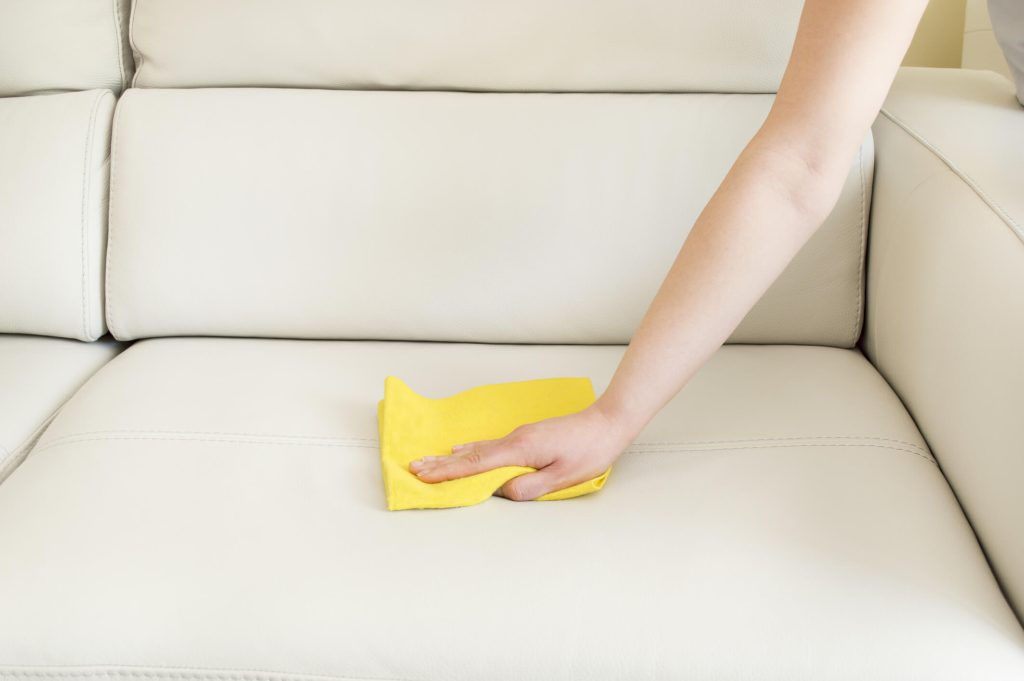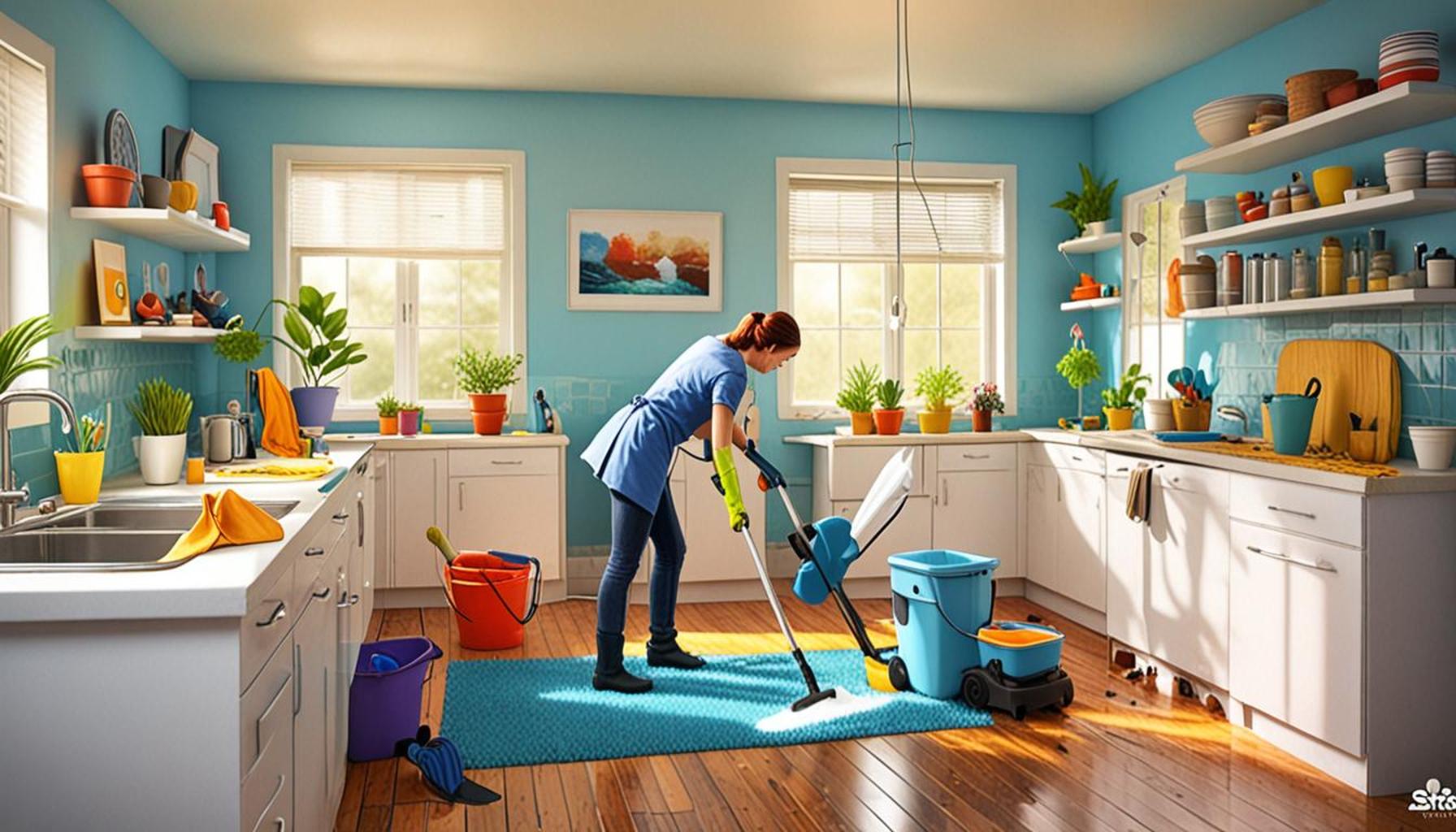Cleaning Techniques for Delicate Surfaces: Safely Caring for Your Furniture

Understanding the Importance of Proper Furniture Care
Furniture serves not only as functional pieces in our homes but also as reflections of our style and comfort preferences. Maintaining its beauty, particularly for delicate surfaces, is crucial to preserving its aesthetic appeal and longevity. The right cleaning techniques can make all the difference, allowing your furniture to remain a source of pride and comfort for years to come.
Common Delicate Surfaces and Their Unique Challenges
Every material requires a unique approach to cleaning, particularly those that are more delicate. Here are several common surfaces you may encounter:
- Wood: Although wood furniture exudes warmth and sophistication, its natural grains can be easily scratched or damaged by harsh cleaning products. Regular dusting with a soft cloth and the application of wood polish can help maintain its luster.
- Glass: Glass tabletops and cabinets necessitate streak-free cleaning methods. Using a mixture of vinegar and water sprayed onto a microfiber cloth can effectively clean glass surfaces while maintaining clarity without leaving residues.
- Leather: Leather upholstery offers a luxurious touch; however, it is sensitive to moisture and can be damaged by harsh detergents. A damp cloth followed by a leather conditioner can be beneficial in maintaining its supple nature.
- Upholstery: The fabrics covering your furniture can easily fade or become stained if not treated with care. Utilizing upholstery-specific cleaners and testing them on inconspicuous areas first can mitigate risks.
Special Considerations for Nigerian Homes
In Nigeria, the tropical climate can introduce additional challenges in caring for your furniture. The high humidity levels present a risk for mold growth, particularly on wooden surfaces. Regular maintenance, such as wiping down wood with a breathable microfiber cloth to reduce moisture accumulation, can help in combating this issue. With the frequent power outages and resultant temperature changes, keep an eye on how that influences your leather furniture, as it can harden or crack if exposed to fluctuating temperatures.
Safe Cleaning Techniques
Employing safe cleaning techniques specific to the material types in your furniture collection is imperative for preserving your investments. For instance, consider utilizing eco-friendly cleaning solutions that are easy on the environment and your furnishings. Establish a routine that includes dusting, vacuuming upholstery with a soft brush attachment, and conditioning leather every few months to ensure longevity.
Ultimately, the way you care for your furniture not only affects its appearance but also its ability to serve you well over time. With proper cleaning methods tailored to the material and environmental considerations unique to Nigeria, you can maintain the beauty and functionality of your furniture for years to come. Explore local cleaning brands and products that align with these methods, and empower yourself with knowledge that turns your home into a sanctuary of comfort and style.

CHECK OUT: Click here to explore more
Identifying the Right Cleaning Methods for Various Materials
Caring for furniture requires a keen understanding of the materials that comprise your beloved pieces. Different surfaces demand different approaches to cleaning, ensuring that their integrity remains intact. Here’s a closer look at specific cleaning methods tailored to some of the most common delicate surfaces found in furniture:
The Wood Wellness Routine
Wood furniture, treasured for its classic beauty, needs gentle care to avoid scratches and tarnishing. Start with a soft, lint-free cloth to remove dust and everyday grime. Following dusting, a well-formulated wood polish can protect and enhance the sheen of your furniture. Instead of using sprays, consider dampening the cloth slightly with a mixture of water and a few drops of mild dish soap. This method allows for deeper cleaning without the risk of wooden surfaces absorbing too much moisture. Remember to wipe in the direction of the grain to avoid damaging the surface.
Crystal Clear Care for Glass Surfaces
For glass furniture, the aim is to achieve a streak-free shine without causing damage. A DIY cleaning solution of equal parts white vinegar and water effectively cuts through grime while being gentle on surfaces. Apply the solution to a microfiber cloth, rather than directly on the glass, to avoid over-saturation. Utilize gentle circular motions or vertical swipes to prevent any accumulation of streaks. For particularly stubborn marks, allow the vinegar solution to sit for a few minutes before wiping clean.
Cleansing Leather Loveliness
Leather is a luxurious addition to any home, but it is also susceptible to the effects of moisture and harsh chemicals. To clean leather surfaces, start with a dry, soft cloth to wipe away dust. Follow up with a well-diluted solution of water and mild soap applied to a separate soft cloth. Gently rub the leather in small sections, ensuring you avoid soaking it. After cleaning, apply a dedicated leather conditioner to keep the material supple and prevent cracking. Aim for conditioning at least every four to six months, particularly in humid conditions, to maintain its resilience.
Upholstery Care Essentials
Upholstered furniture, whether in a vibrant print or a solid color, requires specialized cleaning solutions to preserve fabric integrity. Begin by vacuuming your upholstery using a brush attachment to remove surface dirt and crumbs. For spot cleaning, it’s crucial to identify the fabric type—whether fabric, microfiber, or synthetic—and to choose upholstery-specific cleaners accordingly. Always test the cleaner on a hidden area first to check for colorfastness. For significant stains, consider calling in a professional cleaner experienced in handling delicate fabrics to avoid potential damage.
Climate Considerations and Routine Maintenance
In Nigeria’s warm and humid climate, regular furniture maintenance becomes even more vital. The moisture in the atmosphere can lead to mold and mildew, particularly on wooden surfaces. Create a cleaning schedule that involves checking your furniture more frequently to ensure its well-being. Incorporating a dehumidifier in your living space can help reduce excess moisture, thereby prolonging the life of your furnishings. Implementing these tailored cleaning techniques will promote a sustainable and attractive living space that reflects both style and comfort.
| Cleaning Method | Advantages |
|---|---|
| Gentle Vacuuming | Removes dust and debris without scratching surfaces. |
| Soft Cloth Wiping | Prevents damage while ensuring a thorough clean. |
| pH-Balanced Cleaners | Safely breaks down stains without harming finishes. |
| Spot Cleaning Techniques | Efficiently targets specific stains, prolonging furniture life. |
When it comes to cleaning techniques for delicate surfaces, choosing the right method can significantly impact the longevity and appearance of your furniture. Techniques such as gentle vacuuming can effectively remove dust and particles without the risk of scratching, while using a soft cloth for wiping not only ensures a thorough clean but also protects the surface. Incorporating pH-balanced cleaners into your cleaning routine can break down stubborn stains while being kind to the finish. Lastly, employing spot cleaning techniques targets specific stains, maintaining the integrity of your furniture over time. By utilizing these methods, you allow your delicate surfaces to shine and last, paving the way for a cleaner, more inviting home environment. Feel free to explore these cleaning strategies further for an even deeper understanding of how to care for your valuable furniture.
CHECK OUT: Click here to explore more
Maintaining and Protecting Your Furniture
Once you have established a routine for cleaning your furniture, the next step is to focus on maintenance and protection. Proper upkeep not only enhances the aesthetic appeal of your pieces but also prolongs their lifespan, all while ensuring safety for delicate surfaces.
Understanding UV Damage and Environmental Factors
In Nigeria, the sun’s harsh rays can take a toll on wooden and upholstered furniture. Ultraviolet (UV) light can lead to fading, discoloration, and even deterioration of materials over time. To combat this, consider positioning your furniture away from direct sunlight. When moving to a new room, pay close attention to how sunlight enters that area throughout the day. Adding sheer curtains or UV-filtering window films can also help shield your valuable pieces from sun damage.
The Importance of Coasters and Placemats
When serving drinks or meals, small lapses in attention can lead to big issues on delicate surfaces. Use coasters under glasses and mugs to prevent ring marks and moisture damage. For dining tables or surfaces where food is served, invest in protective placemats. These everyday items create a barrier against scratches and heat, safeguarding your furniture from potential harm.
Dealing with Humidity and Moisture
Humidity levels in Nigeria can fluctuate, particularly during the rainy season. Excess moisture in the air can lead to problems such as mold and mildew growth, especially on upholstered furniture. To counteract this, regularly check for any signs of moisture accumulation and promptly address them. Include a dehumidifier in your home if necessary, as it is an effective way to control humidity levels, keeping your furniture dry and safe.
Inspecting and Repairing Furniture Regularly
Regular inspections of your furniture can reveal underlying issues before they become significant problems. Look for loose joints, scratches, and fabric wear. If you notice any damage, address it as soon as possible. For wooden furniture, consider applying wood glue to re-secure loose joints or scratches. When it comes to upholstery, a fabric repair kit can work wonders to patch up small tears or pulls. If repairs seem beyond your skill set, don’t hesitate to seek professional help to restore your furniture to its original glory.
Utilizing Protective Coverings
When not in use or during extended periods of absence, consider applying protective coverings to your furniture. Soft cotton sheets can offer a layer of protection against dust, while specialized fabric covers can protect upholstery from pet hair or unintentional spills. Be sure to use materials that are breathable; plastic-based covers, while effective in keeping dust away, can trap moisture and lead to mold growth.
Seasonal Cleaning Tips
Seasonal changes also call for adjustments in your cleaning routine. During the dry season, you may find that wooden surfaces require more frequent polishing to maintain their shine. In contrast, during the rainy season, remember to incorporate humidity management strategies into your maintenance approach. Regularly cleaning in accordance with the changing weather creates an environment that promotes durability and aesthetics.
By investing time in thoughtful cleaning techniques and proactive maintenance strategies, you can ensure that your furniture remains both beautiful and functional. Whether your home is filled with lavish wood, plush upholstery, or glass accents, adhering to these carefully crafted methods will guarantee that your furnishings stand the test of time against Nigeria’s unique climate conditions.
RECOMMENDED: Check out this similar article
Conclusion
In conclusion, caring for delicate furniture surfaces requires a thoughtful approach that prioritizes both cleanliness and protection. By adopting a considerate cleaning routine tailored to the materials in your home, you not only preserve the beauty of your furniture but also extend its lifespan. Regularly inspecting for damage, utilizing coasters, and employing the right protective coverings are essential practices that can shield your cherished items from everyday wear and tear.
Furthermore, recognizing and combating environmental factors such as UV light and humidity will enhance your home’s aesthetic while maintaining a safe atmosphere for your furnishings. Keeping a balance between cleaning and protective measures is key, particularly in a climate like Nigeria’s, where the conditions fluctuate widely.
The insights gained from understanding these cleaning techniques will empower you to take proactive steps in preserving your furniture. Whether it’s managing seasonal changes or seeking professional repair when needed, each decision you make contributes to a well-maintained home. Therefore, embrace these practices with enthusiasm, and witness how simple actions can lead to remarkable results in the longevity and appearance of your delicate furniture surfaces.
Ultimately, by treating your furniture with the care it deserves, you enrich the living space that reflects your style and values, ensuring that it remains a source of pride for years to come.


